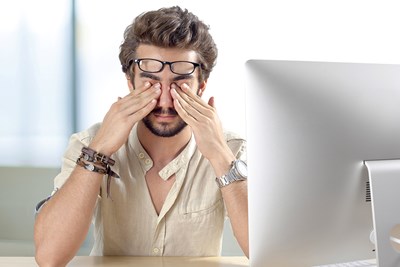A stye is a small, red bump that develops on the inside (internal) or outside (external) edge of the eyelids. This may be due to a blockage or infection of one of the glands in the area (Moll’s, meibomian, or Zei glands) or an infection of an eyelash follicle. Styes can be quite painful, and are most often the result of an infection by Staphylococcus aureus. Here’s a look at how to treat a stye.
At Home Remedies
In most cases, a stye will heal on its own over the course of one to three weeks. Within two days of its appearance, it should start to look like it’s improving. Styes can be quite painful, and a warm compress laid over the area for 5-10 minutes about four times a day can help with the discomfort. It may also help to soothe the swelling, and may encourage the stye to “pop,” allowing the pus and debris built up inside to get out, thus relieving pressure. It is not, however, advised to forcibly pop the stye, even if a whitehead has developed on it (which is not uncommon). This can force the pus and infection further into the tissue or inadvertently get infectious pus in your eyeball.
At the Doctor’s Office
If your stye does not show any signs of improvement after a few days, seems to be getting worse, or the redness and swelling is spreading beyond the stye to encompass more of the eye, it might be time to make an appointment with your family physician or an eye doctor. Sometimes, an antibiotic is necessary to get rid of the bacteria sufficiently for the stye to go away. This can also help with any infection that’s beginning to spread further than the stye itself. Serious complications can develop, like preseptal cellulitis in which the redness and swelling begin to occur on a much larger area of the eyelid and into the surrounding soft tissue.
Eye Drops
To deal with the root of the stye -- namely, the infection -- your doctor may prescribe you antibiotics. Rather than your typical oral antibiotics, antibiotics that can be dropped in the eye or sometimes a topical cream are a better option. A steroid eye drop may be used to reduce some of the swelling inflammation causing pressure and pain.
Stye Surgery
If an eyelash follicle is infected, your doctor may need to pluck the eyelash in question so that the debris inside will make its way out more easily. Sometimes, for very persistent, recurrent, or chronic styes, it may be necessary for your doctor to poke the stye with a small needle or make a tiny incision in it. This will allow the doctor to drain the pus out of the stye so that healing can begin. Styes are more common in adults than children, but children do get them. It may be necessary to use a local anesthetic to numb the area before the procedure. Any underlying issues that may be causing the stye will need to be dealt with as well. If you are concerned about the state of your stye, call your doctor for more personalized advice.



